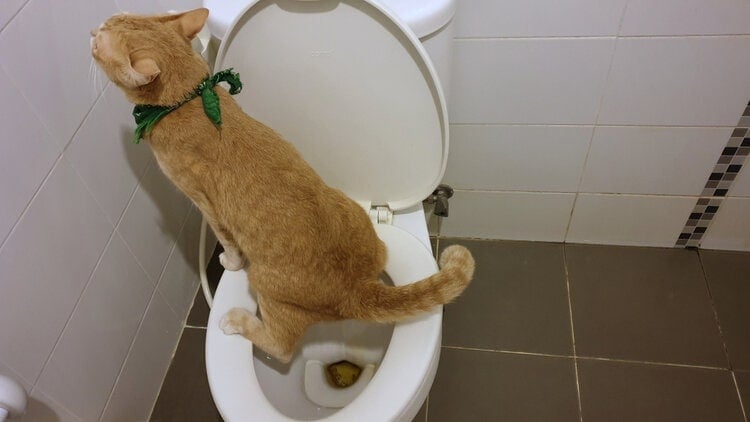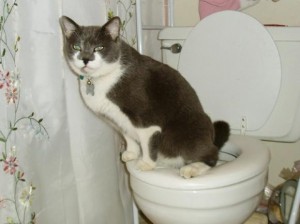Reasons You Must Never Flush Cat Poop Down Your Toilet - Important Information
Reasons You Must Never Flush Cat Poop Down Your Toilet - Important Information
Blog Article
The article author is making a number of good pointers regarding Don’t flush cat feces down the toilet as a whole in the article which follows.

Introduction
As cat proprietors, it's essential to be mindful of just how we take care of our feline close friends' waste. While it might seem convenient to purge feline poop down the toilet, this technique can have harmful consequences for both the setting and human health.
Ecological Impact
Flushing pet cat poop introduces unsafe microorganisms and bloodsuckers into the water system, posing a considerable danger to water environments. These pollutants can adversely impact marine life and compromise water top quality.
Wellness Risks
In addition to ecological worries, flushing feline waste can additionally present health threats to people. Cat feces might have Toxoplasma gondii, a parasite that can cause toxoplasmosis-- a potentially extreme illness, particularly for expectant females and people with weakened body immune systems.
Alternatives to Flushing
Fortunately, there are more secure and a lot more accountable ways to deal with pet cat poop. Think about the complying with alternatives:
1. Scoop and Dispose in Trash
One of the most common approach of throwing away cat poop is to scoop it into an eco-friendly bag and throw it in the garbage. Be sure to utilize a committed litter scoop and throw away the waste promptly.
2. Use Biodegradable Litter
Select eco-friendly pet cat litter made from materials such as corn or wheat. These litters are environmentally friendly and can be safely thrown away in the garbage.
3. Bury in the Yard
If you have a backyard, consider burying cat waste in a designated area away from veggie yards and water resources. Be sure to dig deep enough to prevent contamination of groundwater.
4. Mount a Pet Waste Disposal System
Buy a family pet garbage disposal system particularly made for cat waste. These systems utilize enzymes to break down the waste, minimizing smell and environmental effect.
Conclusion
Accountable family pet possession extends past providing food and shelter-- it additionally involves appropriate waste management. By refraining from flushing pet cat poop down the commode and choosing alternate disposal approaches, we can minimize our environmental footprint and safeguard human health and wellness.
Why Can’t I Flush Cat Poop?
It Spreads a Parasite
Cats are frequently infected with a parasite called toxoplasma gondii. The parasite causes an infection called toxoplasmosis. It is usually harmless to cats. The parasite only uses cat poop as a host for its eggs. Otherwise, the cat’s immune system usually keeps the infection at low enough levels to maintain its own health. But it does not stop the develop of eggs. These eggs are tiny and surprisingly tough. They may survive for a year before they begin to grow. But that’s the problem.
Our wastewater system is not designed to deal with toxoplasmosis eggs. Instead, most eggs will flush from your toilet into sewers and wastewater management plants. After the sewage is treated for many other harmful things in it, it is typically released into local rivers, lakes, or oceans. Here, the toxoplasmosis eggs can find new hosts, including starfish, crabs, otters, and many other wildlife. For many, this is a significant risk to their health. Toxoplasmosis can also end up infecting water sources that are important for agriculture, which means our deer, pigs, and sheep can get infected too.
Is There Risk to Humans?
There can be a risk to human life from flushing cat poop down the toilet. If you do so, the parasites from your cat’s poop can end up in shellfish, game animals, or livestock. If this meat is then served raw or undercooked, the people who eat it can get sick.
In fact, according to the CDC, 40 million people in the United States are infected with toxoplasma gondii. They get it from exposure to infected seafood, or from some kind of cat poop contamination, like drinking from a stream that is contaminated or touching anything that has come into contact with cat poop. That includes just cleaning a cat litter box.
Most people who get infected with these parasites will not develop any symptoms. However, for pregnant women or for those with compromised immune systems, the parasite can cause severe health problems.
How to Handle Cat Poop
The best way to handle cat poop is actually to clean the box more often. The eggs that the parasite sheds will not become active until one to five days after the cat poops. That means that if you clean daily, you’re much less likely to come into direct contact with infectious eggs.
That said, always dispose of cat poop in the garbage and not down the toilet. Wash your hands before and after you clean the litter box, and bring the bag of poop right outside to your garbage bins.
https://trenchlesssolutionsusa.com/why-cant-i-flush-cat-poop/

I was shown that editorial on Can You Flush Cat Poo or Litter Down the Toilet? from a good friend on our other site. If you enjoyed our blog posting kindly don't forget to share it. I take joy in reading our article about Can You Flush Cat Poo or Litter Down the Toilet?.
Call Today Report this page